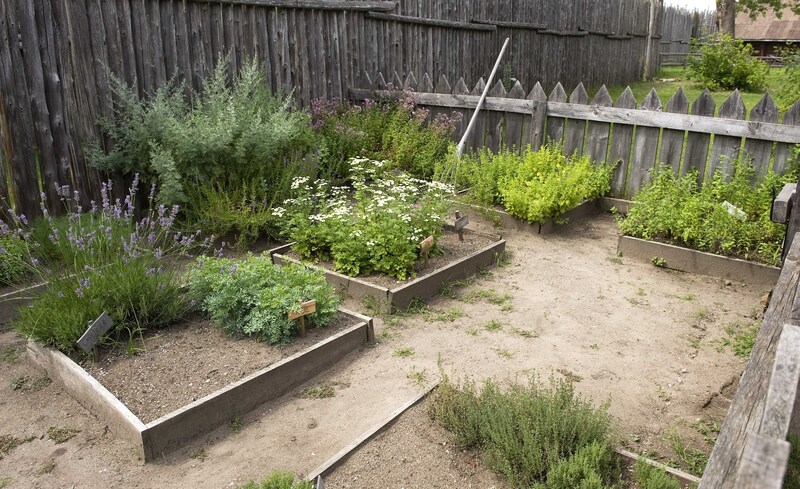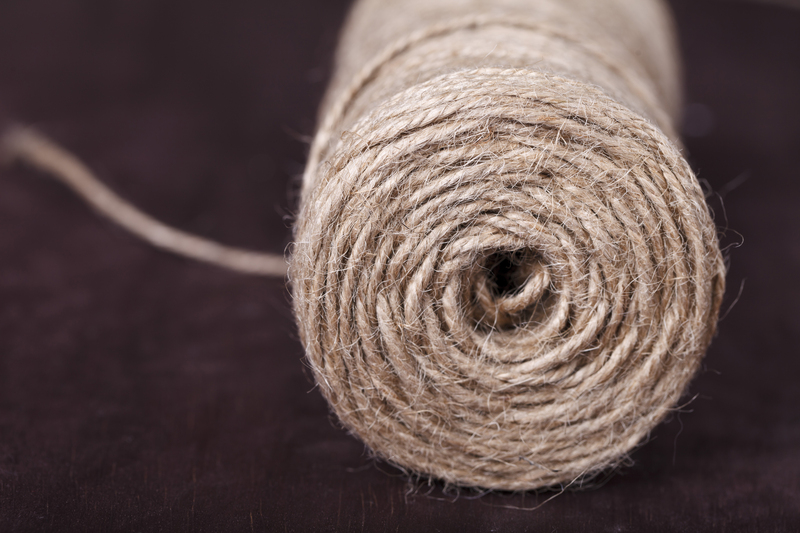Gardener's Guide: Stylish Hedge Trimming Shapes
Posted on 17/09/2025
Gardener's Guide: Stylish Hedge Trimming Shapes
Are you looking to take your garden design to the next level? Hedge trimming shapes are not just a practice of maintenance--they are an art form that can transform your outdoor space into a visual masterpiece. From the classic box hedge to whimsical animal sculptures, the possibilities are as varied as your imagination. This comprehensive gardener's guide will walk you through the essentials of stylish hedge trimming, reveal popular and creative shapes, and provide expert tips for a thriving hedge. Whether you are a beginner or a seasoned gardener, discover how mastering hedge design can elevate your garden's beauty and functionality.
Understanding the Art of Shaped Hedge Trimming
Hedge trimming is more than clipping for neatness--it's about creating living structures that enhance your landscape's aesthetics. Shaped hedges can serve as privacy screens, borders, or focal points, and their unique designs can set the tone for your entire garden. Investing thought and time into stylish hedge trimming shapes will pay lasting dividends, both in curb appeal and personal enjoyment.
Benefits of Shaped Hedges in Your Garden
- Enhanced Visual Appeal: Creative hedge designs add personality and charm.
- Clear Boundaries & Privacy: Well-trimmed hedges delineate spaces and shield your property.
- Wildlife Habitat: Dense hedges support birds and beneficial insects.
- Increased Property Value: A beautifully sculpted landscape can boost real estate appeal.
- Improved Microclimate: Hedges moderate wind, shade areas, and protect other plants.

Popular Hedge Trimming Shapes for Stylish Gardens
There are countless hedge shapes to choose from, each with its own effect on the mood and feel of your garden. Here are some tried-and-tested favorites and a few adventurous options for those seeking something truly unique.
Classic Hedge Shapes
- Box (Rectangular): A timeless look, perfect for formal gardens and neat borders. The straight edges and sharp corners form a sense of order and elegance.
- Ball (Spherical): Softens edges and adds a playful, modern touch. Round forms are popular near pathways or as topiary features.
- Cone & Pyramid: These shapes guide the eye upward, creating visual interest and structure.
- Archways: Shaped hedges can span paths to create inviting entrances, enhancing the sense of arrival.
Creative and Whimsical Hedge Trimming Ideas
- Tiered or Layered Designs: Multi-level shapes like staircases or wedding-cake forms add dimension and extravagance.
- Topiary Animals: From rabbits to peacocks, animal-shaped hedges are delightful centerpieces.
- Spirali (Spiral): Twisting spiral forms are eye-catching and demonstrate advanced gardening prowess.
- Lettering: Skilled trimmers can create initials, words, or logos for personalized character.
- Fantastical Forms: Abstract or geometric designs, such as cubes, obelisks, or even optical illusions, allow your creativity to run wild.
Choosing the Right Style for Your Garden
The hedge trimming style you select should complement your overall landscaping theme. Consider these factors:
- Size of Space: Large gardens can accommodate complex topiary, while smaller plots might require simpler shapes to avoid crowding.
- Garden Style: Formal gardens suit geometric and symmetrical designs; cottage gardens often look best with softer, rounded hedges.
- Plant Type: Not all species respond well to heavy trimming--choose varieties like Buxus (boxwood), Taxus (yew), or Ligustrum (privet) for more elaborate shaping.
- Maintenance Levels: Elaborate and detailed shapes need more frequent touch-ups.
Planning and Designing Your Hedge Trimming Shapes
Before your shears ever touch a branch, consider these planning strategies for success:
Selecting the Best Plants for Decorative Hedge Shapes
The success of your hedge designs starts with plant selection. Some key criteria:
- Dense Foliage: Species with small leaves and dense branching offer smoother finishes.
- Growth Rate: Fast-growing varieties fill in shapes quickly, but may require more trimming maintenance.
- Hardiness: Choose plants tailored to your climate and soil conditions.
Recommended hedge plants for sculpted shapes include:
- Boxwood (Buxus sempervirens): Classic, slow-growing, and easily maintained for geometric shapes.
- Yew (Taxus baccata): Tolerates heavy pruning; ideal for sharp edges and topiary art.
- Privet (Ligustrum vulgare): Fast to establish and great for dense, leafy forms.
- Lonicera nitida (Shrubby honeysuckle): Fine leaves for delicate, intricate designs.
- Holly (Ilex aquifolium): Good for dramatic, glossy shapes, though wear gloves for prickly leaves!
Sketching Your Hedge Trimming Shape
Always visualize--and if possible, sketch--the desired shape before you start trimming:
- Use string, canes, or stakes as physical guides to outline your intended shapes.
- For detailed topiary, crafts like wire frames can provide a long-lasting template.
- Develop a five- or ten-year plan if starting with young hedges.
Techniques and Tools for Stylish Hedge Trimming
Essential Hedge Trimming Equipment
- Hedge Shears: Manual shears for close control and precision.
- Electric or Battery-Powered Hedge Trimmers: Great for large shapes or quick shearing.
- Topiary Clippers: Small, fine scissors or pruners for intricate detail work.
- Loppers: For thicker branches that need shaping in mature hedges.
- Wire Frames & Guides: Ideal for maintaining consistency in complex shapes.
- Spirit Level or Plumb Line: Helps create perfectly straight sides or verticals.
- Protective Gear: Gloves, goggles, and sturdy footwear for safe trimming.
Key Tips for Achieving Elegant Hedge Shapes
- Start Simple: If you're new, begin with basic forms (such as box or ball) before moving to complex topiary.
- Trim Regularly: Prune little and often during the growing season to avoid unruly growth and to encourage density.
- Maintain Width at Base: Always keep hedges slightly wider at the bottom than the top. This shape, known as a batter, ensures lower branches get sunlight and prevents die-back.
- Use the Right Tools: Choose sharp, well-maintained equipment for clean cuts that heal quickly.
- Step Back Frequently: Periodically distance yourself to view progress from multiple perspectives.
- Shape Slowly: Don't rush the process; precision is key to professional-looking results.
- Consider Seasonality: Major pruning is best done in late spring or early summer after the first flush of growth.
Care & Maintenance of Shaped Hedges
Maintaining the beauty of stylish hedge trimming shapes requires consistent attention throughout the year.
- Watering: Newly planted or shaped hedges need regular watering until established.
- Feeding: Apply a slow-release, balanced fertilizer in early spring to support lush growth.
- Mulching: Organic mulch keeps roots cool, retains moisture, and suppresses weeds.
- Weed Management: Clear competitive weeds for hedge health and appearance.
- Inspect for Pests & Disease: Watch for signs like leaf spot, powdery mildew, or insect damage.
- Annual Revitalization: For old or leggy hedges, hard pruning can rejuvenate growth--but do this gradually over several years.
Inspirational Examples of Stylish Hedge Trimming Shapes
Around the world, gardeners and landscapers have created awe-inspiring living sculptures by mastering artistic hedge shapes. Some famed destinations for inspiration include:
- Levens Hall, England: The oldest topiary garden, with mind-bending organic forms dating to the 17th century.
- Chateau de Villandry, France: Ornamental parterres and delicate knot gardens demonstrate geometric precision.
- Marqueyssac, France: Over 150,000 hand-trimmed boxwoods swirl in clouds and spirals across expansive slopes.
- Longwood Gardens, USA: Combines classic geometries with inventive, modern shapes.

Frequently Asked Questions About Hedge Trimming Shapes
How Often Should I Trim My Artistic Hedges?
For most formal shapes and topiary forms, trim every 4 to 6 weeks during the growing season to maintain crisp outlines. Informal or loosely shaped hedges may only need shearing once or twice a year.
Can Any Shrub Be Made Into Decorative Hedge Shapes?
No--not all shrubs tolerate repeated trimming or have the growth pattern needed for well-defined forms. Stick to species known for dense, small-leaved foliage and willingness to regenerate after cuts.
Is Shaped Hedge Trimming Difficult for Beginners?
It can be as easy or ambitious as you like! Begin with simple geometric shapes, practice your technique, and gradually tackle more elaborate designs as your skills improve.
What's the Best Time of Year for Major Trimming?
Most hedge plants benefit from main pruning in late spring or early summer. Avoid hard trimming in very hot, cold, or drought-stressed periods.
Conclusion: Unleash Your Creativity with Hedge Trimming Shapes
In summary, stylish hedge trimming shapes merge practical gardening with creative expression, offering limitless potential to personalize your landscape. From classic rectangles and spheres to whimsical topiary and custom motifs, shaped hedges define, decorate, and inspire. By understanding plant choices, mastering essential techniques, and drawing inspiration from historic gardens, you can transform your property into a sculpted work of art. So gather your tools, sketch your designs, and let your "green thumb" create living masterpieces that will be the envy of your neighborhood!
Want more garden design ideas? Explore our full range of landscaping guides and let your imagination grow!
```
